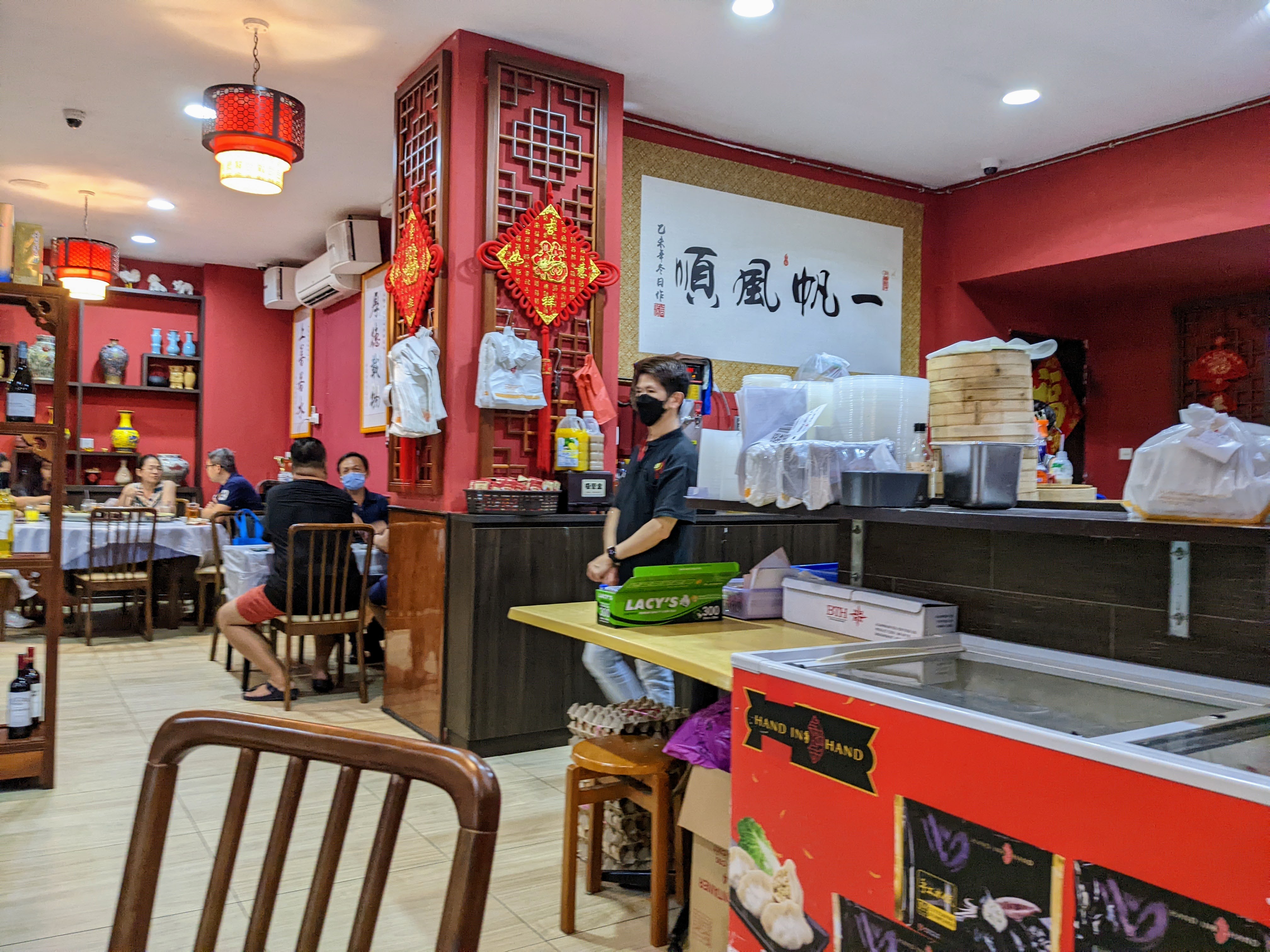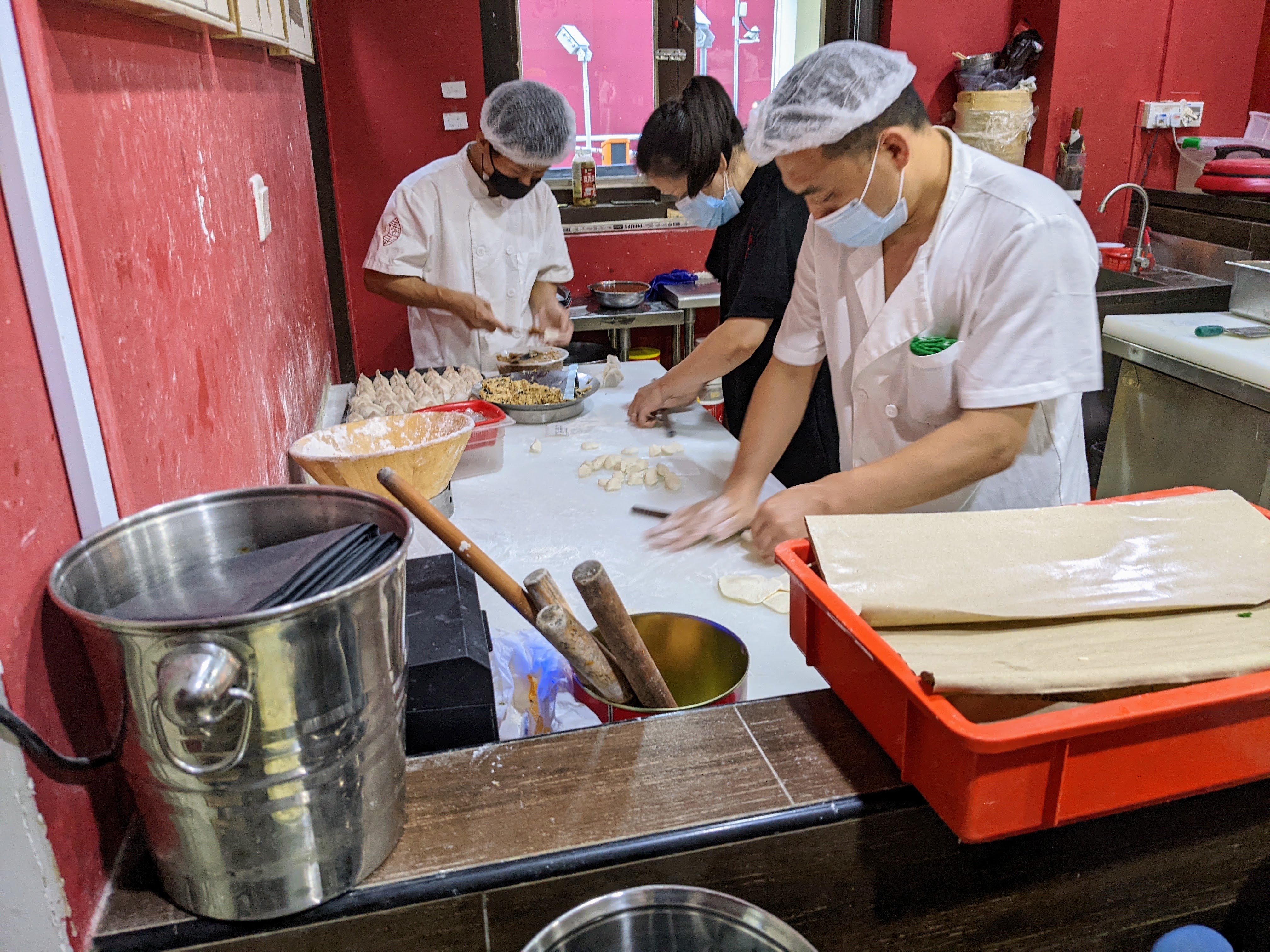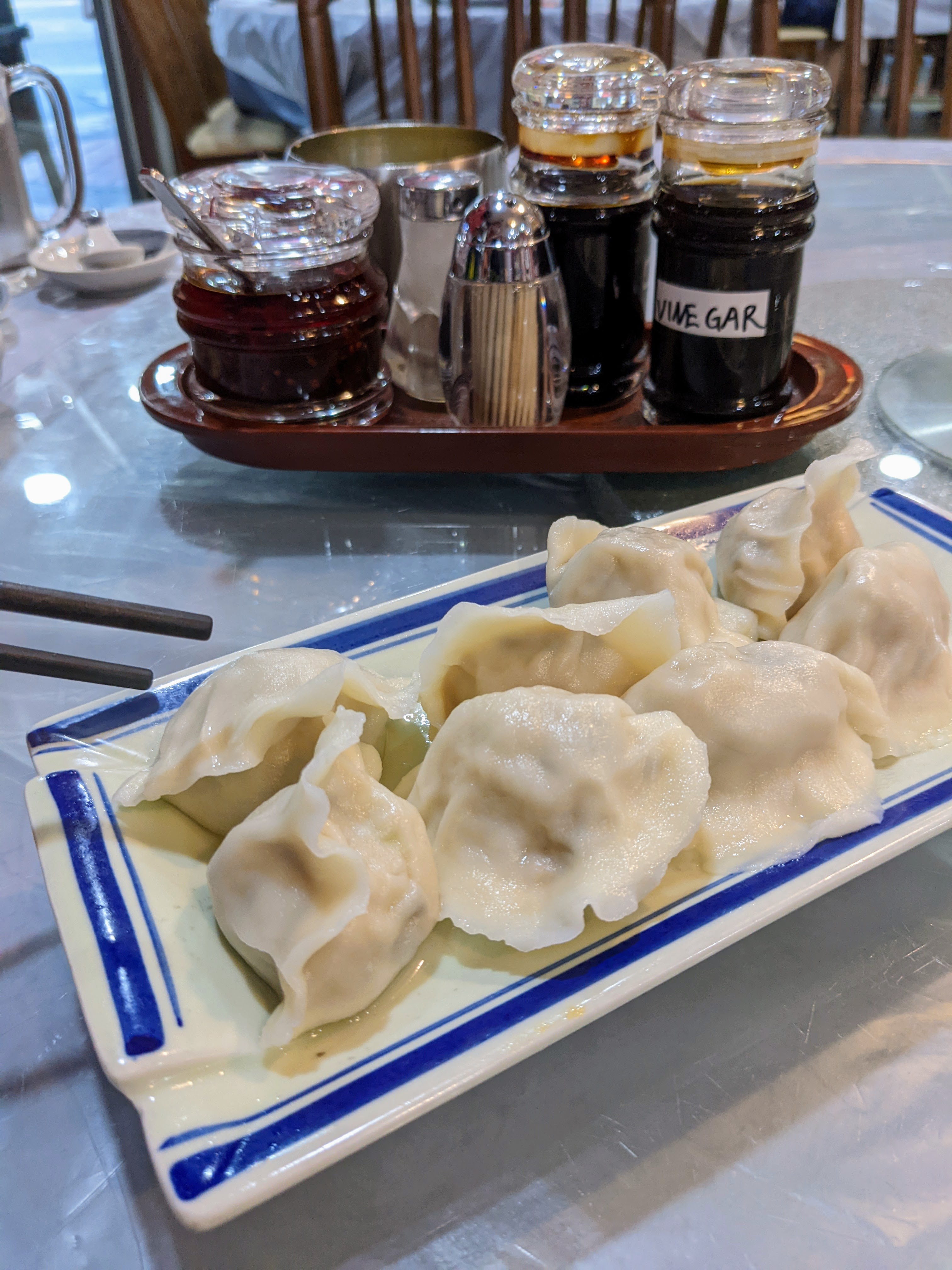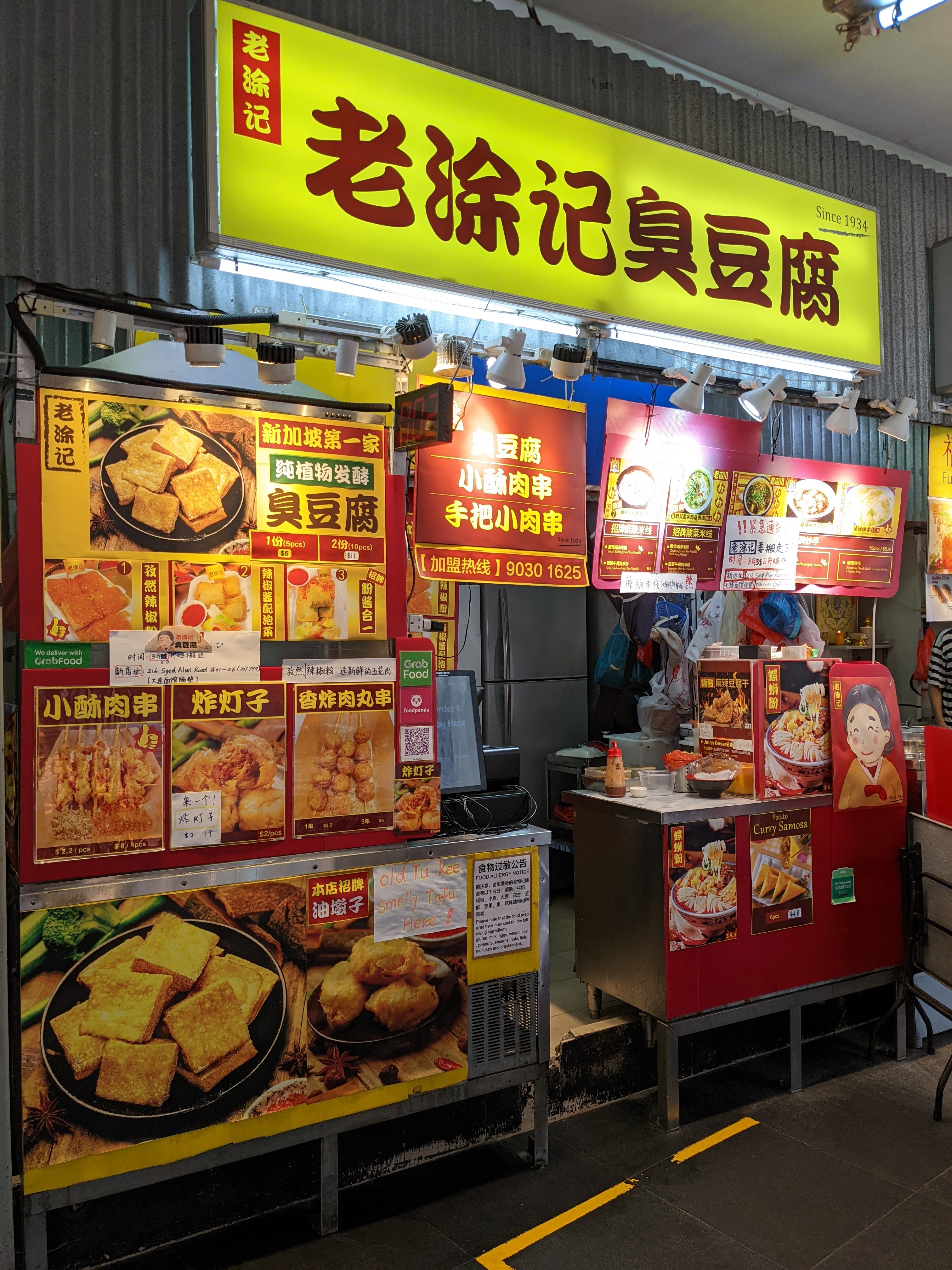Beijing, the “Northern Capital” of China, needs no introduction, but its food might. What we think of as “Chinese” food in the West tends to originate from southern Canton (Guangzhou) and Sichuan, not the north, where the cuisine of the capital (京菜 jīngcài) runs the gamut from the exquisite banquets of the Imperial Palace to humble street stalls. With influences from not just the surrounding regions but the entire country, it’s hard to generalize, but as elsewhere in northern China wheat predominates: not just noodles and dumplings, but a whole slew of pastries (餅 bǐng) and cakes (炸糕 zhàgāo).
I first encountered the one Beijing dish everybody’s heard of, Peking duck, when living in suburban New York as a child. One day, my father brought back a ready-to-eat platter from Chinatown, and I still remembered being surprised at how odd yet tasty and somehow decadent that the combination of savoury pancakes so thin you could see through them, slivers of fatty skin, slices of scallion and that mysterious brown sauce was. Much later in Singapore, an enterprising Beijinger set up shop near my apartment in the now long-gone Pearl Centre. He spoke no English, and his piratical r-laden Beijing dialect was vastly unlike Singapore Mandarin, but I became a regular patron of his signature zhajiangmian (炸醬麵), or “Chinese spaghetti bolognese”, a simple but delicious dish made of noodles created on the spot using nothing but his hands to tease the ball of dough apart into thin strands, topped with a minced pork and bean sauce and a spray of cucumber.





So when I spent a few days in Beijing back in 2018, my first order of business was to recalibrate my tastebuds against the gold standard: the obligatory but delicious Peking duck at the positively opulent Xiheyaju (羲和雅居), some zhajiangmian, the greasy goodness of fried ròubǐng (肉餅) meat pastries, a 5-yuan bottle of 59° Red Star brand erguotou sorghum gutrot… but to be honest, I was both short on time and a little maxed out on dumplings, noodles and deep-fried things after a week of Siberia & Mongolia, so I didn’t dig in quite as much as should have.





For this project, I generally prefer street food, but you can’t really say you’ve covered Beijing without Peking duck, so I rounded up some friends to try out Tung Lok Xihe (同樂羲和), Beijing Xiheyaju’s collab with the fancy Cantonese seafood empire. (Since my visit, they’ve rebranded as Tunglok Peking Duck.) I had my doubts about this combo, tucked away atop an Orchard shopping mall to boot, but the duck here is the real deal. Available only by pre-order, made from Irish ducks (apparently the wagyu of the duck world) and roasted on site in a brick oven, it’s sliced at your table and served with a platter of 8 condiments. In addition to the canonical cucumber/scallion/sweet bean sauce combo for your pancake wraps (“It’s like Mexican Chinese!”, commented my taco-loving offspring), you can also dip the super crispy skin into blueberry sauce and popping candy (!), getting a gimmicky but fun snap crackle pop experience. Often a crispy skin comes at the expense of dry and rubbery meat, but here the duck was juicier than a Cardi B music video, and we devoured it as is instead of opting for the $12 upgrade to get it made into a stir-fry. All in all, definitely the best Peking duck I’ve had in Singapore, and worth the indulgence even at $78++.
Just about the only other Beijing dish on the menu was pan-fried dumplings (锅贴 guōtiē), and the kids worked their ways through two plates so fast I didn’t even get a chance to sample them. Honorable mention goes to the Braised Spinach Beancurd with Monkey Head Mushroom (猴头菇扒翡翠豆腐), a Tung Lok invention with a less than appetizing English name, where homemade tofu is paired with crispy minced spinach and meaty pieces of Hericium erinaceus. Dare I suggest a rebrand to “Jade Tofu with Lion’s Mane”? For the eight of us with tea & desserts but no alcohol, total damage came to a surprisingly reasonable $40/head.



For a more proletarian Beijing experience, we dropped in for dinner at Hand in Hand Beijing Restaurant (手拉手京华小馆), which occupies a corner lot shophouse at Jalan Besar. It was packed on a Friday night, so book ahead!



Hand in Hand is famous for their handmade dumplings, made on the spot and never frozen, so of course we had to start off with some classic steamed Cabbage and Pork Dumplings (白菜猪肉水饺), a simple enough dish but done very well. More uniquely Beijing, though, were the Beijing Beef Pies. Called méndīng ròubǐng (门钉肉饼) in Chinese, literally “doornail meat pies”, these smallish, cute-as-a-button pies are stuffed with minced beef, shallow-fried on both sides and served hot, giving the dough wrapper a great texture and making them super juicy on the inside. These were really, really good — far better than any meat pie I had in Beijing, in fact — and we had to get more because a single service of 3 just wasn’t enough!



We followed up with some tofu skin cooked with milk cabbage (奶白菜 nǎibáicài), a simple but tasty stir-fry, and a bowl of Old Beijing Soup Pot Noodles (老北京炝锅面). This seems to be a Beijing take on Shandong‘s qiàngguōmiàn (炝锅面), a dish whose exact definition appears to elude even Chinese sources. Hand in Hand’s take was a pot with soup, handmade noodles, more milk cabbage, sliced omelette, bits of pork and some clams, and it was rather good. The second hit of the day was our final dish, Shredded Pork with Soy Bean Paste and Popiah (京酱肉丝配薄饼). The soy bean paste here is the same stuff used for zhajiangmian, and with long shreds of pork it’s a classic dish called jīngjiàng ròusī (京酱肉丝, lit. “Capital sauce pork shreds”). In China, it’s typically served with thin sheets of tofu or thick bing bread, but here it was served Peking duck DIY style with the thin crepes and sticks of cucumber, a winning combination. Order extra crepes, you’ll need them!
The bill for 4 came to $110, including a beer to wash it all down. I must sadly note that Beijing’s own Yanjing Beer was not on the menu, forcing us to commit adultery with some Tsingtao from across the province line in Shandong, but rest assured they also have authentically Beijing Red Star rocket fuel/paint thinner on the menu if you’d prefer not to taste or remember your meal.



One more Beijing staple I was keen to try was cornbread, known as wōtóu (窝头) or wōwōtóu (窝窝头) in Chinese, literally “bird’s nest heads”. Originally peasant food, a highly dubious legend say that Cruella de Vil Empress Dowager Cixi was treated to some while fleeing the Boxer Rebellion in 1900, and brought them back to the Forbidden City on her return two years later. Alas, a task of equally legendary difficulty is finding any staple grain other than rice or wheat in Singapore, and not a single restaurant in Singapore appears to offer cornbread on the regular menu. But once again Dough Magic came through with bags of frozen mini wotou for $9.80, in 5 different flavours to boot: yellow corn (玉米), brown sorghum (高粱), black rice (黑米), purple yam (紫薯) and green shepherd’s purse (荠菜). These conical little cups are hollow on the inside, so after steaming for around 5 minutes, we served them up with an Australianized san choy bau (生菜包) filling of minced pork and mushrooms. Tasty, pretty and fun! Although, to be honest, all five types tasted bland and near-identical, even the texture was ground smooth and not gritty like American cornbread.


Last but not least, I sampled a classic Beijing dessert at Kāng Jì Bīngtánghúlu (康记冰糖葫芦), a little stall down a narrow lorong (alley) in Singapore’s red-light district of Geylang, an area down at heel even before COVID hit and distinctly worse for the wear after two years of total nightlife shutdown. The shop has zero English signage or presence on the English-language internet, and I was rather astonished to find that it was still there. Tanghulu is the Chinese version of candied apples, traditionally made from Chinese hawthorn, but the day I popped in the hawthorn version wasn’t ready yet and the friendly shopkeeper suggested I try a freshly made strawberry one instead. Hot damn, this was a revelation: $5 gets you a skewer of 5 large strawberries, wrapped in an edible sheet of sugar (don’t peel it off!), coated with a slightly salty crunchy shell of rock sugar, and deliciously ripe, warm and juicy on the inside. This rocketed straight up my personal Chinese dessert chart for sure, and on that high note, we bid a farewall to the Chinese capital and plunge onward.

































